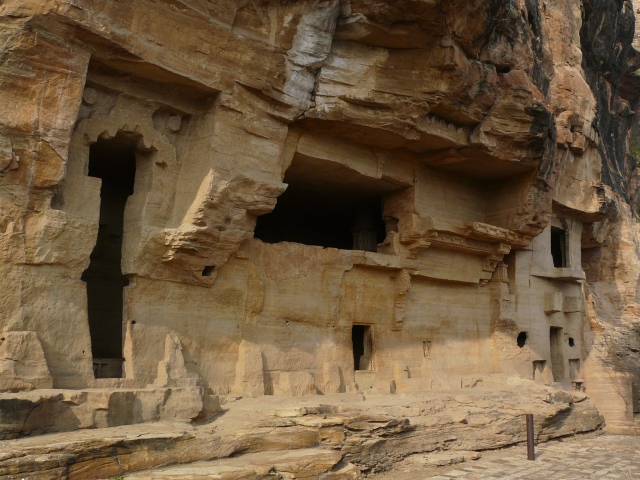At various places along the high escarpment of Gwalior Fort’s hill are rock-cut statues of the Jain pantheon of Tirthankar saints. The best known among these are two major statue groups along the western approach route up the hill through Urwahi valley. There are also a few such caves accessible via a flight of steps along the north-eastern approach route to the hill. However, not mentioned in any of the guidebooks that I referred to is a large group of Tirthankar statues (probably the best of the lot) along the south-eastern escarpment, which I have shown here. These statues are not on any of the routes going up to the table-top, and have to be accessed separately from the other architectural sites on the hill. There is another set of such statues along the north-western escarpment, which I did not visit.
Most of the Jain statues on the hill had been chiseled during the 15th c when the fort was under the control of Tomar kings, though a few are thought to date back as far as the 7th c AD.
View of the main group of rock-cut sculptures, looking southwards:
This photo establishes scale with the man in the bottom left corner. The tallest statues should be about 25ft high:
General view looking northwards among the main group of statues:
The smaller, northernmost statues:
Photos of the statues below, going in a general south-to-north direction. Most of the faces and genitalia were broken off during the subsequent Mughal period. A few of the faces have been recreated using plaster in modern times:










































very interesting
LikeLike
Pingback: Gwalior Fort, Part 5: Rock-Cut Jain Tirthankar Statues Along the South-West Approach Road | Sarson ke Khet
Pingback: Gwalior Fort, Part 1: Fort & Palaces | Sarson ke Khet
very nice
LikeLike